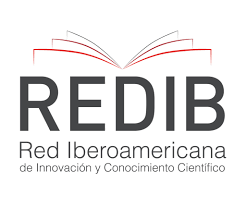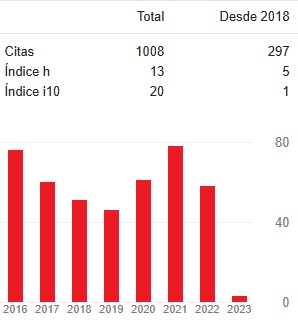UGENIA DE MONTIJO SEEN BY THE ROYALTY OF HER TIME. FROM ARRIVIST TO REVERED EMPRESS
DOI:
https://doi.org/10.51743/cih.90Keywords:
eugenia de montijo, napoleon bonaparte, empressAbstract
On December 2, 1852, Prince Louis Napoleon Bonaparte, until then president of the Second French Republic, proclaimed the creation of the Second French Empire after a coup that months ago had strengthened the powers of the executive and diminished those of the legislative chambers. , thus generating a feeling of perplexity among the old European royalty, some of whose members still remembered the turbulent and turbulent years in which their uncle, the great Napoleon, had forever changed the map of Europe. That dynasty of parvenus, the Bonaparte, was once again playing strongly on the great European board and soon the whole of Paris of the influential and important was going to begin to speculate on the necessary marriage of the new emperor, who in his younger years He had expressed his desire to marry his cousin-sister, Princess Matilda, daughter of his old uncle Jerome Bonaparte, who decades ago had been fleeting King of Westphalia.
Downloads
Global Statistics ℹ️
|
473
Views
|
1142
Downloads
|
|
1615
Total
|
|
References
Almagro San Martin, Melchor de, Crónica de Alfonso XIII y su linaje, Madrid, Ediciones Atlas, 1946.
Aronson, Theo, Queen Victoria and the Bonapartes, Londres, Cassell, 1972
Aronson, Theo, The Golden Bees. The Story of the Bonapartes, New York, New York Graphic Society, 1964.
Bertin, Celia, La dernière Bonaparte, Paris, Perrin, 1982.
Bonnin, Georges (editor), Bismarck and the Hohenzollern candidature for the Spanish Throne. The documents in the German diplomatic archives, Londres, Chatto & Windus, 1957.
Corti, Conde, Elisabeth Empress of Austria, London, Thornton Butterworth, 1936.
Defrance, Olivier, Léopold Ier et le clan Cobourg, París, Les Racines de l’Histoire, 2004.
Fulford, Roger (ed.), Beloved Mama. The Private Correspondence of Queen Victoria and the German Crown Princess 1878-1885, Londres, Evans Borthers, 1981.
Fulford, Roger (ed.), Your Dear Letter. Private Correspondence of Queen Victoria and the Crown Princess of Prussia 1865-1871, Londres, Evans Brothers, 1971.
Haasse, Hella, y Jackman, S.W., A Stranger in The Hague. The Letters of Queen Sophie of The Netherlands to Lady Malet, 1842-1877, Londres, Duke University Press, 1989.
Holt, Edgar, Plon-Plon. The Life of Prince Napoleon (1822-1891), London, Michael Joseph, 1973.
Lavradio, marqués de, Memórias do sexto marquês de Lavradio, Lisboa, Editorial Nova Ática, 2004.
María Luisa, princesa, My Memoirs of Six Reigns, Londres, Evans Brothers, 1957.
Mateos Sáinz de Medrano, Ricardo, Alfonso y Ena, la boda del siglo; Madrid, La Esfera de los Libros, 2019.
Mension-Rigau, Éric, L’Ami du prince. Journal inédit d’Alfred de Gramont (1892-1915), París, Fayard, 2011.
Murat, princesa Caroline, My Memoirs, London, Eveleigh Nash, 1910.
Paget, Lady Walburga, Embassies of Other Days and further recollections of Walburga, Lady Paget, Londres, Hutchinson & Co., 1923.
Paoli, Dominique, Clémentine princesse Napoleon, 1872-1955, París, Éditions Duculot, 1992.
Paoli, Dominique, Henriette Duchesse de Vendôme 1870-1948, París, Racine, 2000.
Richardson, Joanna, Princess Mathilde, London, Weidenfeld and Nicolson, 1969.
Richardson, Joanna, Portrait of a Bonaparte. The Life and Times of Joseph-Napoleon Primoli 1851-1927, Londres, Quartet Books, 1987.
Saint Aubyn, Giles, The Royal George 1819-1904, Londres, Constable, 1963.
Salisbury, Lady, A Great Lady’s Friendships. Letters to Mary, Marchioness of Salisbury countess of Derby (1862-1890), London, Macmillan and Co., 1933.
Teck, Duquesa María Adelaida de, A Memoirs of H.R.H. Princess Mary Adelaide Duchess of Teck. Based on her private diaries and letters, Londres, John Murray, 1900.
Vassili, conde Paul, France from Behind the Veil: Fifty Years of Social and Political Life, London, Cassell and Co., 1914.
Downloads
Published
How to Cite
Issue
Section
License
The Fundación Universitaria Española publishing house preserves the patrimonial rights (copyright) of published works, and encourages and allows their reuse. The works are published in the electronic edition of the journal under a license “Creative Commons Atribución/Reconocimiento-NoComercial 4.0 Licencia Pública Internacional — CC BY-NC 4.0”, and can be copied, used, disseminated, transmitted and publicly exhibited, provided that : a) the authorship and original source of its publication is cited (journal, publisher and URL of the work); b) are not used for commercial purposes; c) the existence and specifications of this license of use are mentioned.
The author / s partially transfer the property rights (copyright) of this work to the Fundación Universitaria Española (Spain) (NIF: G28433670), for the printed and online editions.
It also declares to have respected the ethical principles of research and to be free from any conflict of interest.
«C.I.H.» encourages the authors and the scientific community to the maximum promotion and dissemination of the works in their final version through:
1) Your list of contacts (emails) and social networks (Facebook, Twitter, LinkedIn ...).
2) Institutional repository of your University and public repositories (Mendeley, Cosis ...).
3) Scientific social networks (ResearchGate, Academia.edu, Kudos ...).
4) Personal or institutional website, blog, etc.
5) Google Scholar, ORCID, ResearchID, ScopusID, Dimensions, PlumX ...
6) Printed copies purchased directly and sent to specialists for reading and subsequent citation if appropriate.
For the nomination of future articles by authors of "C.I.H.", the impact of previous works will be taken into account, so that those with citation higher than the annual average of the journal will be preferred.












2.jpg)
















1.png)
1.png)

1.png)


.png)
.png)

.png)
1.png)
1.png)
